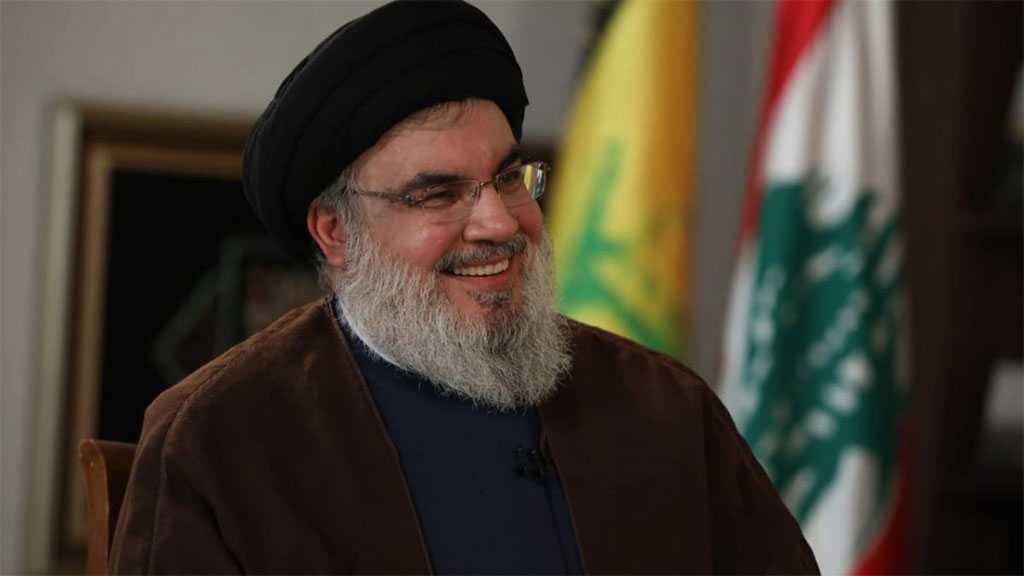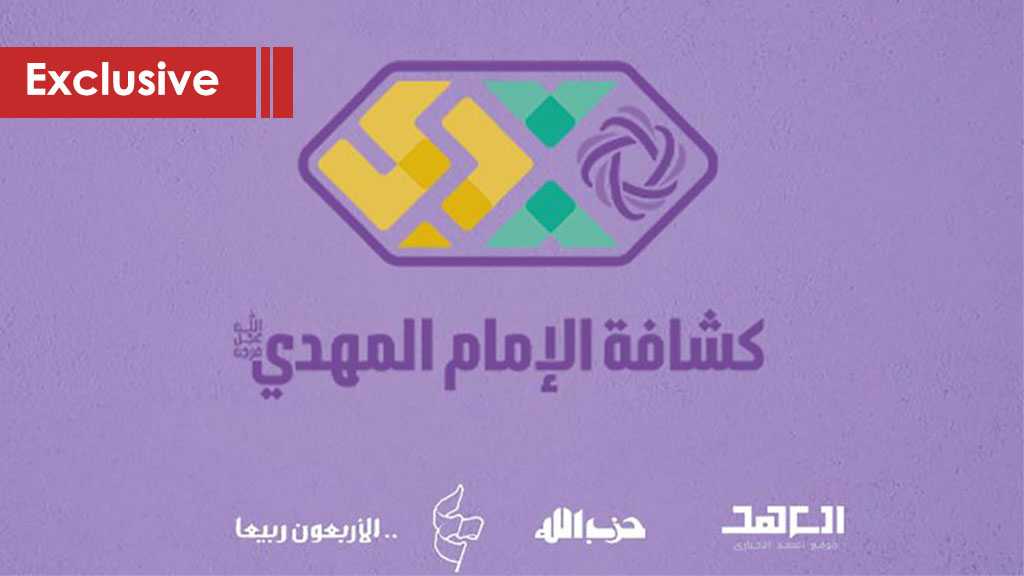
The Islamic Resistance Support Association: An Incubator That Does Not Know Apathy

By Latifa Al-Husseiny
Beirut – For 40 years, the people of the resistance have embraced and supported jihad in defense of their land. There is a lifetime of support between the days of its founding and the days of victory over the enemy. There’s no hesitation when it comes to initiatives. The goal is clear and specific: a sacrifice for freedom and an effort to preserve rights.
A few years after the launch of the Islamic Resistance, military operations intensified. The confrontation gradually escalated. Efforts were made to support the resistance fighters in their posts. Everyone wanted to become their pillar of support and even a partner in their successive victories and in delivering painful blows to the Zionists.
In the mid-1980s, attacks on the people of the south and the western Beqaa intensified. A group of social activists decided not to stand idly by, so they gathered in the municipality of Halousiya during a famous sit-in that lasted about three months to denounce the arrest of a group of scholars and brothers, including His Eminence Sheikh Abbas Harb.
They formed what was known at that time as the Islamic Resistance Support Committee in the South and West Beqaa, which included Hajj Ali Harkous, Hajj Abdel Halim Atwi, Hajj Ali Zreik, Hajj Abdullah Al-Zein, and Sayyed Abu Hassan Zalzali. Later Hajj Muhammad Berjawi and martyr Muhammad Bajaiji joined them.
As time went by, the work evolved and burdens became heavier while each of the founders assumed new tasks. His Eminence Sheikh Hussein Kourani, Sayyed Qassem Al-Taweel, Sayyed Nabil Mortada, Hajj Hassan Nama, Hajj Abu Issam Ashmar, and Hajj Hussein Al-Shami carried on with the committee’s work until it became a licensed body.
It sought to provide a new experience as popular support for the operations of the Mujahideen grew. It yielded daily results at that time and convinced people of the actual ability to fight the enemy through reliance on God and with the appropriate preparation and equipment.
Director of the women’s activities and member of the administrative board of the IRSA Hajja Um Mahdi Badreddine recalls the establishment stage 32 years ago, when the main goal was to engage the incubating environment with victories and heroisms.
A series of events played an important role in mobilizing supporters: the martyrdom operation Ahmed Kassir, the liberation of eastern Sidon, the assassination of Sheikh Ragheb Harb and Sayyed Abbas al-Moussawi, and the parliamentary elections in 1992. At that time, volunteers formed the largest apparatus within Hezbollah.
According to Um Mahdi, as the projects started successively, it was necessary to have a central administration and district officials. At this stage, the organizational structure began to take shape for the work of the IRSA, and it was inevitable that there be particularity for the sisters. In 1990, the association obtained an official license from the Ministry of Interior to carry out its work on Lebanese territory.
IRSA Projects
The projects were underway. The most prominent and well-known one may have been the “Al-Qujah” [collection box] project or the donation boxes for the IRSA. The box was made in the shape of the Dome of the Rock and was linked to the symbolism of Palestine and the liberation of the land.
Hezbollah Secretary General Sayyed Hassan Nasrallah stressed the importance of its presence in every household as it carries educational value above anything else.
Gradually other projects followed – from the monthly subscription, equip a resistance fighter, Ramadan iftars, breakfasts, and brunches to Zajal recitals and political seminars, and songs for religious and national occasions.
And thanks to the effectiveness and efficiency of the association’s female component, the female volunteers took on the task of preparing food and supplies for the Mujahideen on the frontlines while they were in the midst of battles. The women also allocated dishes for them at the start of each Hijri month, according to Umm Mahdi.
Opening up to the resistance
The jihad trips where participants are accompanied by resistance officers to the military sites and landmarks in the south were one of the IRSA’s most popular activities.
Um Mahdi points out that these trips were able to humanize the relationship between the people, in general, as well as official figures and in particular, the wives of presidents, representatives, and ministers with the Mujahideen. Many of them got acquainted for the first time with the border of the homeland and the borders of Palestine. Most never knew anything beyond Sidon. After the July 2006 aggression, these women would call to check on the resistance fighters.
The events of 1997 and the martyrdom of Sayyed Hadi Nasrallah was a turning point in the association’s work. Um Mahdi points out that this stage led others “to accept us”. Hence, the responsibilities increased, and the tours reached the north and the mountains. All of this accumulated successes for the IRSA. In-kind and material donations also increased.
Thousands of dollars especially for the resistance
The donations varied. In this context, Umm Mahdi talks about the many distinguished contributions that were the culmination of the IRSA’s work.
The option to contribute to the Price of a Rocket Project attracted the sons of the country, including members of the Christian community. For example, in 1996, a Christian woman came to the Bir al-Abed Mosque and donated $5,000 to buy Katyusha rockets for the resistance. Another woman from the Hadath area offered $10,000 for missiles.
This means that the concept of liberating the land was such a strong motivator for people that the project to equip Mujahid, which started with $1,000, attracted many female donors.
Hajj Imad and the 6 million pounds incident
Regarding trust and interaction, Umm Mahdi recalls an incident when one woman allocated 6 million Lebanese pounds to the IRSA on the condition that it be used to carry out a military operation. Martyred leader Hajj Imad Mughniyeh laughed, saying, "These barely pay for bullets."
Loyal people in the world are firm in their support for the resistance
It is true that the conditions in Lebanon today are severe, but that did not prevent people from supporting the resistance and standing by it through thick and thin.
Um Mahdi affirms that people are determined to be partners in the achievements and victories of the resistance, highlighting the fact that internal and external support is still alive and loyal people from all over the world are firm in supporting the resistance.
She says that people around the world have not and will not lack the means to support the resistance. She explains that shortly after the July 2006 war and in the midst of the devastation, the association recorded in one of its Ramadan Iftars in September the highest percentage of donations in the history of IRSA. This confirms that people are loyal to this line despite the hardship.
Sheikh Kourani's media policy: An effective proactive view
Throughout the many years of hard work by the IRSA, the name of the great late Sheikh Hussein Kourani stands out. His Eminence was the general supervisor of the plans and projects.
According to Um Mahdi, the late Sheikh realized early on the significance of His Eminence Imam Sayyed Ali Khamenei’s focus on investing in the media. So, he explored all the available avenues for reaching the widest audience, keeping pace with technological and informational developments and investing in his many relationships in service of the resistance’s path.
His proactive view was evident when he chose to give the Internet the utmost importance at the time when the digital sphere began spreading in Lebanon and the world. In 1996, His Eminence initiated the opening of a resistance online mail, which resonated among the expatriates. This was completed with the launch of the first integrated website for the Islamic Resistance on the Internet – it was in English and quickly gained success and popularity.
At that time, the psychological and media warfare with the Zionists entered a new phase. The Ansariya operation in 1997 and the enemy’s setback there was an opportunity for a strike through the association’s website. It published pictures of body parts and dead “Israeli” soldiers and details of the battle. The dissemination tactic adopted by the IRSA established Hezbollah's media weapon as an influential system that is monitored and feared.
Today, the IRSA continues its work without hindrances. Some think that the embargo and sanctions may weaken its determination, but the data indicates further progress internally and externally. Those who love this line are on their pledge: Supporting the resistance with money and everything possible.
Comments

![Gen. Soleimani: Sayyed Nasrallah’s Entire Existence Is Sincerity… I Love Him [Documentary]](https://english.alahednews.com.lb/uploaded2/images/20220908122823.jpg)
![Hezbollah: Forty Dimensions of Uniqueness In Local & Regional Contexts [1/3]](https://english.alahednews.com.lb/uploaded2/images/20220826085658.jpg)
